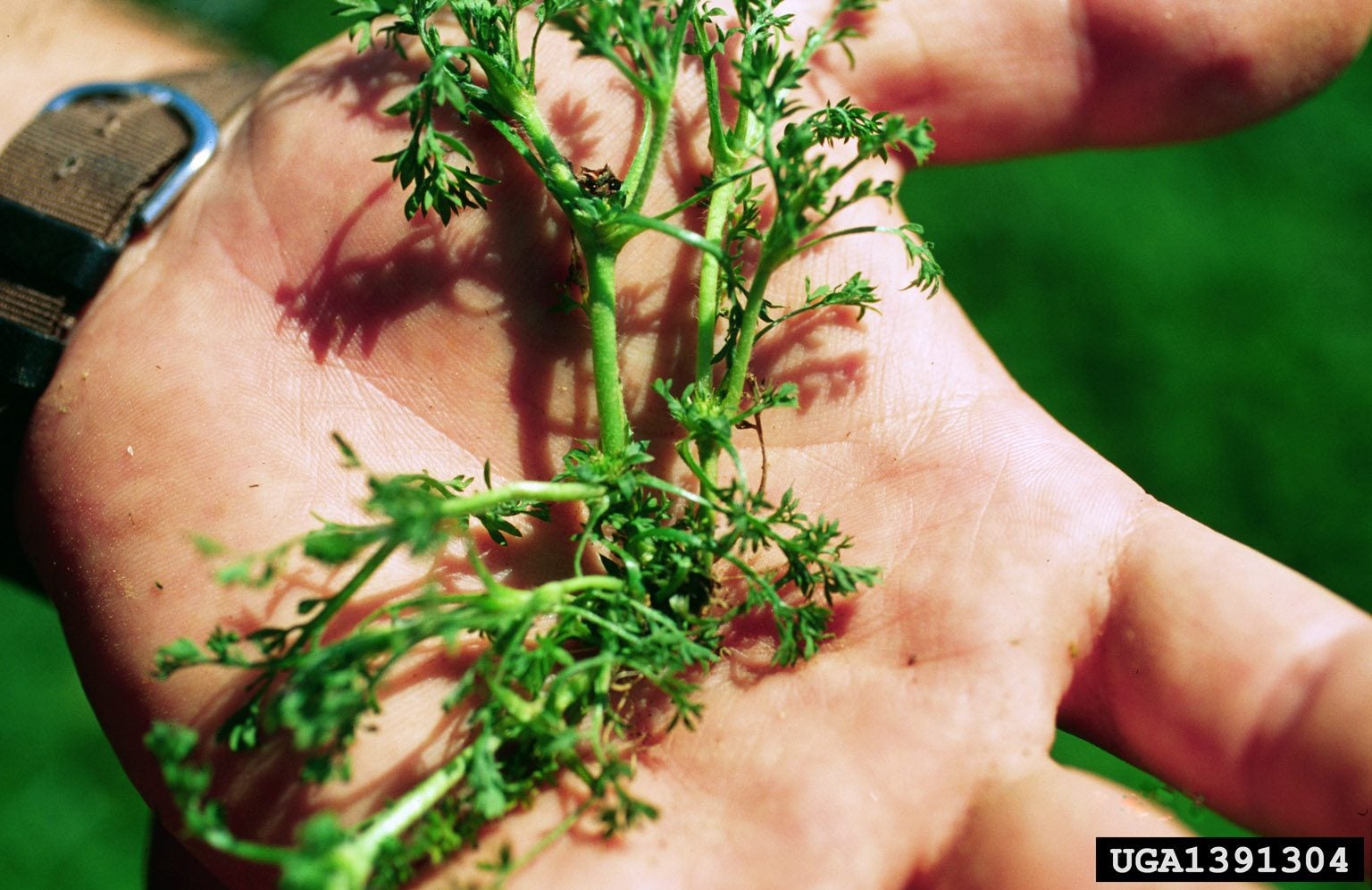Control Of Lawn Spurweed: Tips For Eliminating Spurweeds


We've all been there. Spring arrives and our grass is becoming that green carpet in which you love to spread your bare toes. Oh, but what have we here? Sticky spurweed (Soliva sessilis) plants and other weeds are competing with your lawn. Lawn spurweed is an equal opportunity pest plant that occurs in most regions of the United States. It is quite invasive and is prickly and painful on your feet and legs. A little knowledge on how to kill spurweed will help protect your lawn from this nasty weed and spare tender skin from its burs and barbs.
Lawn Spurweed Information
Spurweed plants, also known as lawn burweed, are found in ditches, meadows, turf, roadsides, and damaged plots. The plants are low growing and produce long, rangy stems filled with hairy leaves and sticky stems. The stems have purple mottling and alternate palmate leaves. Spurweed is predominant in the warmer climates of the United States and emerges in winter as an annual plant. In late spring the real nuisance begins when the plant sets fruit. The fruits are similar to small cones and are barbed and spiny. Once the little cones are formed, the plant has plenty of seed to set for the next year's crop and you are stuck dealing with it for another season. Spurweed control will have to wait until the coming fall when plants emerge.
Elminating Spurweeds
You can always pull the weeds, but the fibrous roots tend to break away and the plant can return. This is just a temporary fix anyway, as numerous seeds from the plant wait in soil for an ideal time to germinate. A better method for eliminating spurweeds is to use an appropriate post-emergent herbicide in winter or a pre-emergent one in fall before germination has occurred. That way you can hit the plants before they form the damaging seed heads or cones. There are several formulas for spurweed control, but they all rely on control when the plant is young.
How to Kill Spurweed
You can use a pre-emergent herbicide in early October to early November before the seeds have germinated. A post-emergent application should wait until you see the tiny parsley-like plants, which is usually January or February. Once you have identified them, you can use formulas of Dicamba, 2, 4D, or MCPP. Follow the directions carefully for a two or three-way mixture as recommended by the manufacturer. Choose a windless day when spraying where temperatures are 55 degrees F. (12 C.) or above. Make sure children and pets are not in the area when spraying. St. Augustine and Centipede grasses will require a more diluted application to prevent killing the sensitive grass. Some post-emergent herbicides will require a second application in two weeks. You need to watch the weed population and decide if the lawn needs a second treatment. If you catch these plants before they can fruit and seed, you can achieve good control in a couple of years. Thereafter, a good, broadleaf herbicide will achieve excellent management when used as part of a weed and feed program.
Sign up for the Gardening Know How newsletter today and receive a free copy of our e-book "How to Grow Delicious Tomatoes".

Bonnie Grant is a professional landscaper with a Certification in Urban Gardening. She has been gardening and writing for 15 years. A former professional chef, she has a passion for edible landscaping.